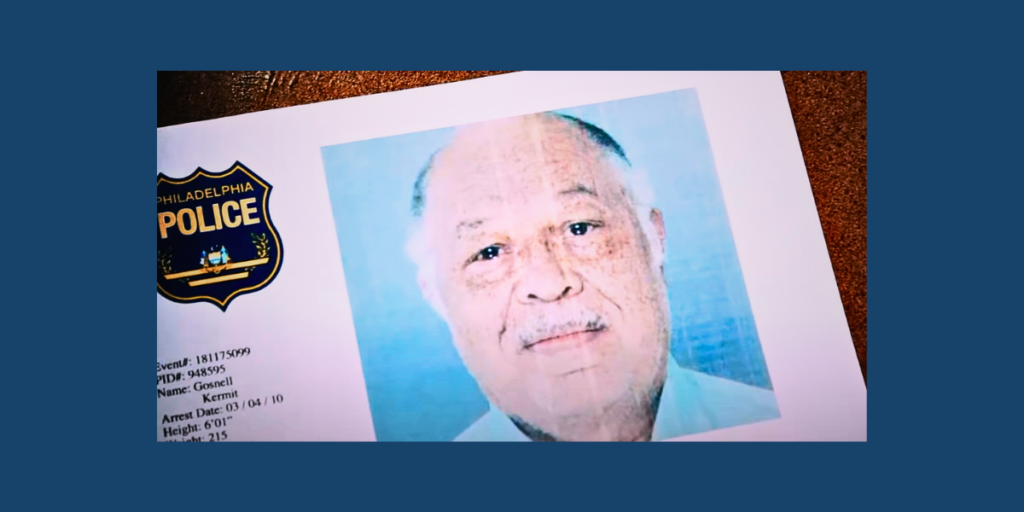
Remember Kermit Gosnell?
By John M. Grondelski | November 6th 2023 – The New Oxford Review
Ohio in 2023 should not want to be Pennsylvania in 2013
As Buckeyes head to the polls Tuesday to vote on Issue 1, an extreme amendment to the State Constitution that would — among other things like surrogacy, artificial reproduction, and state subsidy of abortion — ensconce abortion-on-demand through birth, they might want to remember Kermit Gosnell.
Kermit Gosnell is somebody abortionists want to forget. It’s been a decade since he was convicted of three counts of first-degree murder and one of involuntary manslaughter. The 82-year-old spent the past ten years in prison.
Those who are unfamiliar with the name can be excused, because the abortion industry did its best to wipe out coverage and subsequent discussion of Gosnell’s abortion “clinic” that prosecutors called a “house of horrors” in Philadelphia. In fact, the only reason Gosnell’s abattoir came to light was not because the city or state decided to enforce its abortion laws but because they were investigating Gosnell for handing out painkillers like candy. In addition to his life sentence, he got 30 years in prison for rampant distribution of oxycontin, some of which found its way to Philly drug dealers.
When police came to check out Gosnell’s doings with drugs, they found the rest of his business, which included bottles of pickled fetuses he was preserving. The “clinic’s” sanitary standards included a roaming cat and dried blood. As investigators pressed the matter, they discovered Gosnell’s unique medical technique: “snipping.” Gosnell’s practice included third-trimester abortions. He would deliver the unborn child, then snip its spinal cord. As revolting as that might sound, it does not fundamentally differ from “dilation and evacuation” (or “partial-birth abortion,” a procedure abortionists claim does not exist because they do not like the terminology), which involves partial delivery of a late-term unborn child but for its head which, prior to leaving the birth canal, is punctured by surgical scissors, the cerebral contents then suctioned out.
Apart from “snipping” unborn children (21 charges, three convictions based on completeness of evidence), there was the involuntary manslaughter case of Karnamaya Mongar, a Bhutanese woman who died at Gosnell’s hands during an abortion.
Had these details not come out, Gosnell likely would have been cheered by the abortion industry as an African-American doctor who helped “minority” and “poor” women by running a clinic in a rundown Philadelphia neighborhood. Somebody might have even given him an award rather than a jail sentence… but for those pesky details.
Another pesky detail: Gosnell was not an OB-GYN. He was not particularly trained in female reproduction. He was a general practitioner. That did not stop him from performing abortions. Why not? Because even though Pennsylvania around 2010 was still a pro-life state with pro-life legislation on its books, it had pro-abortion politicians who looked the other way.
What’s “rule of law” when you’re advancing “reproductive rights” in very blue, very Democrat Philadelphia?
Nor was it just a partisan matter. Tom Ridge, a pro-abortion Republican, was then governor. Under Ridge, laws requiring inspection of abortion facilities were ignored. Too bad for Karnamaya Mongar and the snipped babies.
Why dredge up all this ten years after the event? Surely Kermit Gosnell will die — maybe soon — in jail and it can all be forgotten.
Because Ohio in 2023 does not want to be Pennsylvania in 2013.
Issue 1, which would legalize abortion-through-birth in the Buckeye State, would almost certainly nullify most restrictions on abortion. The amendment itself explicitly says that no restrictions can be imposed unless “the State demonstrates that it is using the least restrictive means to advance the individual’s health in accordance with widely accepted and evidence-based standards of care.” Since the burden of proof is against the State and “widely accepted and evidence-based standards of care” are likely to be those promoted by Planned Parenthood and other abortion advocates, any protective legislation will likely face frequently insurmountable hurdles. Abortionists generally dismiss such protective laws as “TRAP” regulations (targeted restrictions of abortion providers) and, under the permissive Roe regime, were generally able to find federal courts to overturn them. Remember, too, that Pennsylvania had the laws but not the will to enforce them, while Ohio would not even be allowed to have the laws.
So, if Issue 1 goes into force, a future Kermit Gosnell could operate in Cleveland or Athens (the Ohio University county voted 75%+ against an August referendum that would have made it tougher to approve Issue 1) with impunity.
Issue 1 uses the term physician only once. It otherwise speaks of a “person or entity that assists an individual exercising this right [to abortion].” As we know from bluer states, pro-abortionists have generally tried to remove restrictions that limit performing abortions to physicians, farming out the procedure to other “medical personnel,” e.g., nurses. So, the fact that Gosnell was not an OB-GYN wouldn’t matter. He’d even get points for being a physician! And, if he decided to go to lunch and leave the abortion to his assistant — no problem!
Gosnell was convicted for “snipping” unborn children he delivered. Under Issue 1, he’d only have to declare that they were not “viable” (because Issue 1 does not define viability and makes clear viability is a matter of the “professional judgment of the treating physician” that is “determined on a case-by-case basis.” So, the likes of Kermit would have a “get-out-of-jail free” card!
By creating a legal standard that biases the State against regulating abortion clinics, Ohio would be incentivized by law to do what Pennsylvania politicians were doing in practice: playing a “see no evil” game with abortionists. The Grand Jury that indicted Gosnell in 2011 noted in its report that no abortion clinic in Pennsylvania had been inspected, contrary to state law, since 1996. The last time Gosnell’s facilities were visited by state inspectors was 1993. Gosnell was reported by a county medical examiner for performing an abortion on a 14-year-old who was 30 weeks (i.e., seven months) pregnant — something illegal in Pennsylvania — but the state took no action. If pro-abortion politics paralyzed law enforcement in Pennsylvania, what would state constitutional mandate cause in Ohio?
There are, of course, many other reasons to oppose Issue 1. It would eviscerate parental consent or even notification laws. It would make spousal notification impossible. It would force Ohio to pay for abortions under state Medicaid and other programs. It would likely legalize surrogacy under its protection of “reproductive choice.” Its language (e.g., “pregnant individual”) is intended to ensconce gender ideology into the state constitution.
But, right now, the most telling argument against Issue 1 is that it would protect quacks like Kermit Gosnell. Sure, abortionists will deny they want anything to do with him (their vow of silence about him beats the Mafia’s omertà) but, when you consider
Planned Parenthood in Ohio never really fesses up to the patients it’s sent to the hospital thanks to “safe abortions” in its facilities;
abortionists’ general reluctance to police their own ranks, much less allow normal state medical supervision to do so; and
the incentives they all have — even if (dato non concesso) you call abortion “healthcare” — to sweep whatever doesn’t fit their narrative under the rug (with the state restrained from lifting up the carpet)
then you have to ask: No matter how lethal Issue 1 may be for the unborn, is it even arguably good for women?
(If you know anybody in Ohio, you might want to email them this post).
John M. Grondelski (Ph.D., Fordham) was former associate dean of the School of Theology, Seton Hall University, South Orange, New Jersey.
